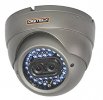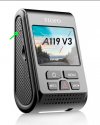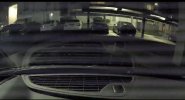Dashmellow
Well-Known Member
- Joined
- Sep 22, 2013
- Messages
- 18,251
- Reaction score
- 18,901
- Location
- Uncanny Valley (●_●)
- Country
- United States
- Dash Cam
- Umpteen
Why would you need to do that when with simple logic it could be implemented with the current single lens?
I'm not sure what simple logic you may be speaking of but it has been suggested that optimizing a single channel dash cam for both day AND night HDR is not that easy to achieve and may be more than its processor can handle.
Two channels could eliminate the problems being discussed here, especially the double exposure issues exhibited when HDR is enabled during the day. In addition, two channels would allow exposure parameters and other settings to be highly optimized for day or night without having to stress the resources of the processor's capabilities. For example, this scheme would not require the camera to change its settings on the fly for day or night as you suggest as they would be dedicated to each channel in their menu options. I believe this approach is more likely to be achievable than on a single channel camera. Conceivably, there could even be two similar but different lenses used to enhance each channel's intended purpose, such as a faster night lens. Perhaps HDR could be implemented on one channel and not the other or the choice of WDR "or" HDR for each channel could be a menu option, although I'm not sure if that would be technically possible.
HDR has a lot of potential but it is highly problematic and has drawbacks and trade offs. When attempted previously in other cameras it has been abandoned because it is very difficult to get it to function properly. In fact, many here may remember when Viofo attempted HDR three years ago on an older A119 version but never put it into production. (see: HDR will be added on A119.) The Mobius 2 camera also attempted HDR, initially with outstanding results in some situations but many compromises in other conditions and it too was abandoned.
HDR, as implemented in the A119 V3 (as was the case with the M2) uses the camera's 60 frame per second capability to shoot two simultaneous 30 fps images. One of the 30 fps images is optimized for the shadows and the other 30 fps image is optimized for the bright highlights and they are then superimposed over one another to create a single high dynamic range video image for each of the 30 frames. This technique works beautifully for still photography but is difficult in a low end SoC video device like a dash cam. So far at least, it only seems to work well in high end cinematography level cameras.
From the looks of examples being posted here in this thread the V3 appears to have trouble syncing the registration of the two HDR 30 frame images when capturing other vehicles at speed, hence the double exposures we're seeing. I wonder if @viofo might be able to address the problem of these out of registration double images in a future firmware update or whether it is simply baked into the cake in the processor implementation? Without a proper fix, it makes the issue of motion blur when HDR is enabled intolerable, especially when compared to the excellent 60 fps results without the out of registration double images.
I've been experimenting with a V3 myself and was delighted when I saw that the new firmware update included the HDR function at long last. On the first day I was thrilled with the performance but on the second day when operating the camera under a wider variety of different lighting conditions I was astonished to see how bad the HDR double exposure issue really was when I examined the footage carefully. On the third day I disabled HDR and found the 60 fps second performance to be far better with capturing moving objects but bright lighting conditions become a problem, especially where I live because I am constantly driving under a canopy of trees out into bright open sunlight where the camera becomes overwhelmed with blown out highlights. I may revert to v1.3 but I plan to experiment further with the camera settings and see if I can improve the exposure.

BTW, two channel, dual lens CCTV cameras have been around for at least 15 years now, if not longer. They have one channel optimized for daytime and the other that only works in the dark. When the light fades to about 5 lux a photoresisitor switches off the daylight camera and switches on the night channel until morning when it reverses. It is basically the same concept I propose now that we have dual channel DSPs for dash cams. I've had one of those dual channel CCTV cameras on one of my buildings and it has been in service for quite some time. It is a real workhorse and it is what got me thinking of the idea to implement it in a dash cam. We actually discussed this idea many years ago here on DCT but the technology to make it happen didn't exist at that time.

Last edited:



